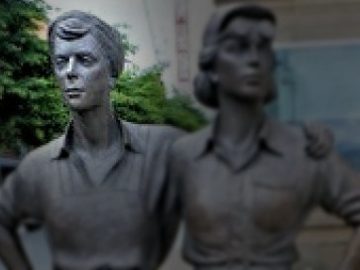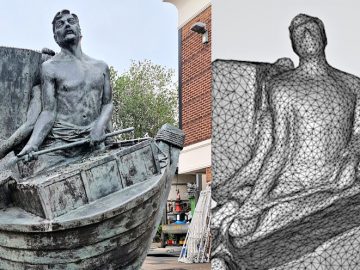Chester, or Deva as it was once known, was a Roman city home to the 20th Legion: Legio XX Valeria Victrix. As such it had many fine classical buildings and even an excellent amphitheatre which you can still see much of today. And while a lot of that ancient heritage is now lost, many artefacts have been recovered. Some can be found at the excellent Grosvenor Museum in the city centre, but some larger ones can also be found in the Chester Roman Gardens. There you can find some amazing Roman stone columns, so I thought I should try to scan a couple: partly for the fun of it and partly as a way to compare using Kiri Engine and Luma Labs AI for creating 3D printable meshes.
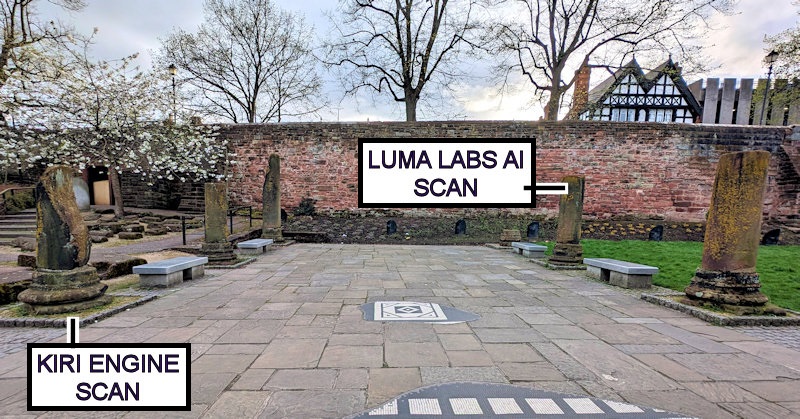
Quick summary of this 3D creation
Overview: Photogrammetry 3D scans of two Roman stone columns.
Location: Roman Gardens, Chester, England [map].
Date/era: Ancient, Roman.
Software used: Kiri Engine, Luma Labs AI, Nomad Sculpt, Blender.
Intended use: 3D printing (no supports for FDM) or digital uses.
Download: Thingiverse page or Thangs page.
The Kiri Engine scan was created from 130 12mp smartphone photos taken on a Pixel 8 phone. They were uploaded to the Kiri web system to create the 3D model, using the high quality setting for mesh detail. The Luma Labs scan started as a 5.7k 360 degree video captured on an Insta360 One RS camera. It was then reframed in the Insta360 app, to remain pointed toward the column, and exported as a 4k fisheye video. That video was then uploaded to the Luma Labs AI web system for processing into a 3D model.
Both 3D models were then finished in the same way. Firstly they were trimmed and reoriented in Blender, where they were also turned into watertight meshes. Then they were tidied up in the Nomad Sculpt app, after which they were decimated to around 10% of the original number of vertices. The finished 3D models are shown below and I think it’s obvious that both Kiri Engine and Luma Labs provided good quality 3D-printable meshes. However, as you probably expect, Kiri Engine provided a scan with much more fine detail: which is to be expected as Luma Labs is more appropriate for scanning digital assets such as video scenes.
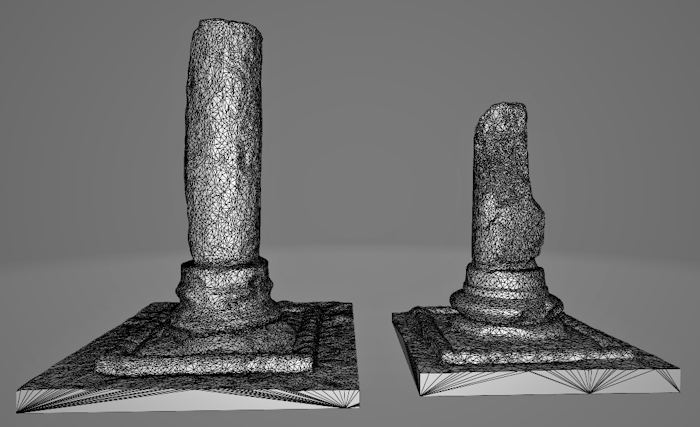
Of course, having more detail isn’t that much use when it comes to small-scale 3D printing using FDM printers. And so, In Blender, the two models were combined into one and exported as an STL file. I used my Flashforge Adventurer 3C printer for the printing, using PLA filament, which did a pretty good job considering it has a 0.4mm nozzle more suited to larger prints. You can see the results in the photo below and I think both scanning methods came up with pretty good results for making small models.
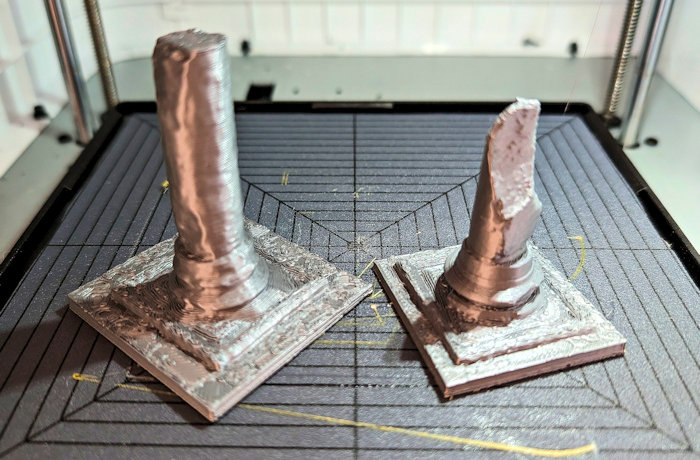
Hopefully you’ll find these two ancient stone column 3D models satisfy your yearning for your very own miniature Roman temple or forum 🙂

